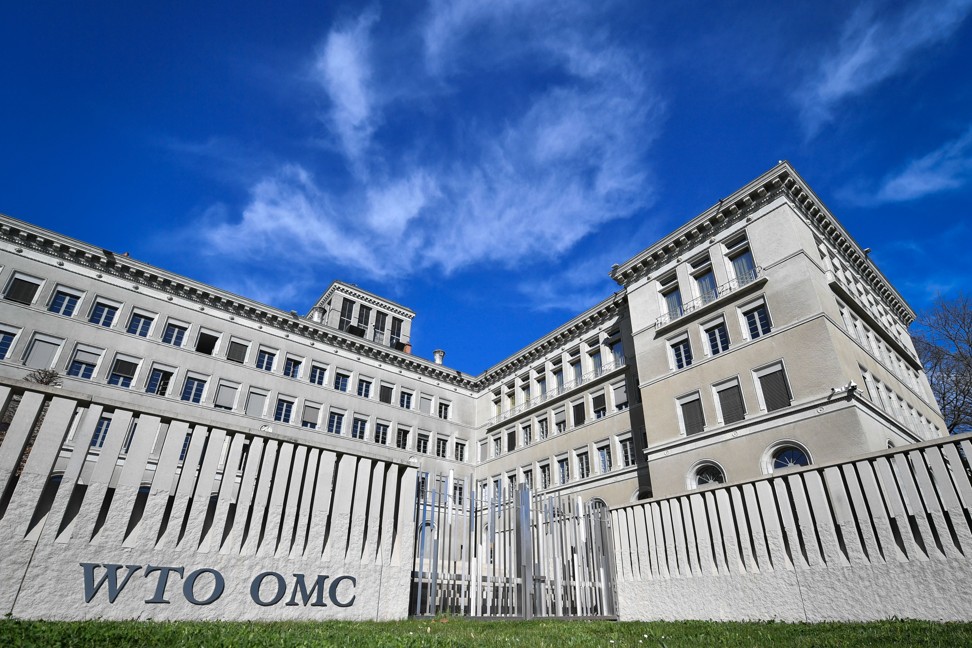
China seeking moral high ground against Donald Trump with WTO complaint over latest US tariffs, analysts say
- Beijing has filed a lawsuit with the World Trade Organisation after Washington imposed the first batch of new tariffs on US$300 billion of Chinese imports
- It is unlikely to solve the dispute, but Beijing is showcasing its support for multilateralism compared to unilateralism, analyst said
China’s move to file an official complaint with the World Trade Organisation over new tariffs from the United States on Chinese products is largely a symbolic attempt to gain the moral high ground by supporting the international trading system amid the ongoing trade war, analysts said.
It is not the first time that Beijing has resorted to the Geneva-based multilateral trade organisation to address its disputes against the tariffs imposed by US President Donald Trump. China formally complained to the WTO after the US levied a 25 per cent duty on US$50 billion of Chinese goods in July and August last year, and again in September 2018 after Washington placed 10 per cent tariffs on US$200 billion of Chinese goods.
However, the WTO, which serves as the judge to settle trade disputes between member countries, has yet to rule on either of China’s previous two complaints and is unlikely to be able to rule on the third due to structural roadblocks erected by the US.
The WTO dispute settlement mechanism is in danger of ceasing to be able to function because the US has refused to approve any new judges to the body’s appellate division. If no new judges are approved by the end of 2019, the appellate branch will not have the minimum number required to hear cases.
Given that the WTO’s process will last well beyond the end of this year, Beijing’s official complaint about new US tariffs are more symbolism than substance, said Shen Jianguang, the chief economist at JD Digit and a veteran Chinese economy watcher.
“First of all, it takes a relatively long period [of time] for the WTO to handle a complaint – the water from afar can’t quench immediate thirst,” Shen explained, referring to an ancient Chinese proverb.
“Also, Trump had threatened to pull the US out of the WTO, so there’s no way to force US to do anything even if [China] wins the case,” Shen added.
Trump had threatened to pull the US out of the WTO, so there’s no way to force US to do anything even if [China] wins the case
But China’s decision to bring the dispute to the WTO sends a message that “China values multilateralism even as Trump is pursuing unilateralism”, a move that could help Beijing convince the rest of the world that it is occupying the moral high ground in its trade war with the US, Shen said.
The Ministry of Commerce statement on Monday added that China lodged the complaint to “resolutely safeguard its legitimate interests and firmly defend the multilateral trading system and international trading order”.
The US side, however, has been blaming China for engaging in unfair practices since the beginning of the trade dispute early last year, relying on its own domestic laws to argue it has the right to unilaterally punish China until it corrects its practices.
The US published a written defence on Friday against Beijing’s complaints last year, arguing that China and the US had agreed that the issue should not be settled at the WTO, Reuters reported.

“China has taken the unilateral decision to adopt aggressive industrial policy measures to steal or otherwise unfairly acquire the technology of its trading partners; the United States has adopted tariff measures to try to obtain the elimination of China’s unfair and distortive technology-transfer policies,” said the statement, according to Reuters.
An editorial in the People’s Daily on Tuesday argued that China has always tried to solve trade disputes with the US with the “greatest sincerity” and urged the US to undo its tariff increases to pave the way for further talks.
It echoed an earlier statement from China’s Ministry of Commerce that the US must reverse its decision to impose tariffs on all Chinese products.

